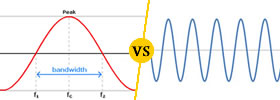Difference between New York and Chicago
Key Difference: New York City is known to have a significant impact upon commerce, finance, media, art, fashion, research, technology, education, and entertainment. Chicago is considered as an international hub for finance, commerce, industry, technology, telecommunications, and transportation.
 Which one is better, New York or Chicago? This question has resulted in numerous articles and blog posts each of which tells a completely different story. New York and Chicago are two of the most famous cities in the United States. Each city has something completely different to offer to its residents.
Which one is better, New York or Chicago? This question has resulted in numerous articles and blog posts each of which tells a completely different story. New York and Chicago are two of the most famous cities in the United States. Each city has something completely different to offer to its residents.
Along with being the most popular city in the United States, New York is also the most populous city in the country. It is located in the State of New York, on the east border of the country. It is considered as the cultural and the financial capital of the world and is known to have a significant impact upon commerce, finance, media, art, fashion, research, technology, education, and entertainment.
It is famous for places such as its museums, Broadway, Times Square, Brooklyn Bridge, its many parks, etc. New York’s history can be dated back to 1624, when it was originally called New Amsterdam by the Dutch. The city was then handed over to the British in 1664, following which it was renamed New York after the then Duke of York. New York served as the capital of the United States from 1785 until 1790. It has been the country's largest city since 1790. It is also a very popular tourist place, receiving over 50 million tourists.

Chicago is the third most populous city in the United States after New York and Los Angeles. It is the most populous city in the Midwestern United States. It is located in the State of Illinois, which falls along the middle section of the country. Chicago is considered as an international hub for finance, commerce, industry, technology, telecommunications, and transportation. The O’Hare airport, Chicago’s primary airport is one the busiest airport in the whole world.
Chicago was incorporated as a city in 1837 and was named after ‘shikaakwa’, a wild onion or leek that grew in the area. It is also nicknamed The Windy City, which has less to do with the weather and more with the city’s rivalry with Cincinnati. Chicago is also known for its contributions to the visual arts, novels, film, theatre, especially improvisational comedy, and music, particularly jazz, blues, soul, and the creation of house music. Chicago is also known for building the very first sky scraper using a steel-skeleton, following a fire that destroyed much of the city. Popular sites in Chicago include the Chicago Theatre, the 'L', Navy Pier, Millennium Park, the Field Museum, and Willis Tower.
No two cities are alike; this lies true for New York and Chicago. Each city has a whole lot to offer. Where New York offers fashion, a fast paced life, art and money, Chicago offers theatre, film and music. The major difference that lies between the two cities is cost of living. New York is far more expensive than Chicago. Almost everything is far more expensive in NY, rather than in any other city.
Comparison between New York and Chicago:
|
|
New York |
Chicago |
|
State |
New York State |
Illinois |
|
Settled |
1624 |
1780s |
|
Incorporated (city) |
1898 |
March 4, 1837 |
|
Time zone |
Eastern (EST) |
Central (UTC) |
|
Nicknames |
The Big City, The Big Apple, Gotham, The City That Never Sleeps, The Melting Pot, The Five Boroughs, The Empire City, New Amsterdam |
The Windy City, Chi-Town, The Second City, City of Broad Shoulders |
|
Counties |
Bronx, Kings, New York, Queens, Richmond |
Cook and DuPage |
|
Government Type |
Mayor-Council |
Mayor-Council |
|
Body |
New York City Council |
Chicago City Council |
|
Mayor |
Bill de Blasio |
Rahm Emanuel |
|
Real Estate |
Very expensive and cramped |
Cheaper and more spacious |
|
Name and Etymology |
Originally named New Amsterdam, but was surrendered to England and renamed to New York, after the Duke of York. |
The name ‘Chicago’ is derived from the Native American word ‘shikaakwa’, meaning "wild leek" or "wild onion" or "wild garlic". It was named after the wild garlic called ‘chicagoua’ that grew there. |
|
Food |
More expensive
|
Cheaper
|
|
Population |
8.49 million approximately |
2.72 million approximately |
|
Crowded |
Is far more crowded |
Is less crowded |
|
Ethnicity |
More mixed ethnicity |
Has lesser diversity compared to NYC |
|
Skyline |
Has a more mixed skyline, with bigger and smaller buildings |
Has a more balanced and contiguous skyline |
|
Art Culture |
Has a better art culture with bigger and better museums. |
Has a moderate art culture but the theatre and museum is comparatively less popular than NYC. |
|
Cost of Living |
Is very expensive |
Is cheaper compared to NYC |
|
Mass Transit |
Has a more evolved transportation system because of the subway |
Is moderate |
|
Major Attractions |
Midtown Manhattan, Times Square, the Unisphere in Queens, the Brooklyn Bridge, Lower Manhattan with One World Trade Center, Central Park, the headquarters of the United Nations, and the Statue of Liberty |
Downtown Chicago, the Chicago Theatre, the 'L', Navy Pier, Millennium Park, the Field Museum, and Willis Tower. |
|
Arts |
New York City has more than 2,000 arts and cultural organizations and more than 500 art galleries of all sizes. Also, NYC is home to the biggest theatre scene – the Broadway |
Chicago is famous for its outdoor public art with donors establishing funding for such art. |
|
Climate |
New York City itself experiences a humid subtropical climate (Cfa) and is thus the northernmost major city on the North American continent with this categorization. The suburbs to the immediate north and west lie in the transition zone from a humid subtropical (Cfa) to a humid continental climate (Dfa). |
The city lies within the humid continental climate zone and experiences four distinct seasons. Summers are warm to hot and humid, with a July daily average of 75.8 °F (24.3 °C). In a normal summer, temperatures can exceed 90 °F (32 °C) on 21 days. Winters are cold and snowy with few sunny days, and the normal January high is just below freezing. Spring and autumn are mild seasons with low humidity. |
|
Tourism |
Tourism is a vital industry for New York City, which has witnessed a growing combined volume of international and domestic tourists – receiving approximately 51 million tourists in 2011, 54 million in 2013, and a record 56.4 million in 2014. Tourism generated an all-time high US$61.3 billion in overall economic impact for New York City in 2014. |
In 2012, Chicago attracted 34.07 million domestic leisure travelers, 10.92 million domestic business travelers and 1.369 million overseas visitors. These visitors contributed more than US$12.8 billion to Chicago's economy. |
|
Cuisine |
Varied cuisine styles that have been influenced by the immigrants that reside there. It includes food items such as bagels, cheesecake, and New York-style pizza, Chinese restaurants, sandwich joints, trattorias, diners, coffeehouses, falafel, Indian food, etc. |
The cuisine reflects the city’s ethnic and working class roots and includes specialities such as deep-dish pizza, Chicago-style hot dog, Chicago sandwiches, Italian beef sandwich, chicken Vesuvio, Puerto Rican-influenced jibarito, Greek dish – saganaki, etc. |
Image Courtesy: deardarrica.com, chicagopostcardmuseum.org









Add new comment